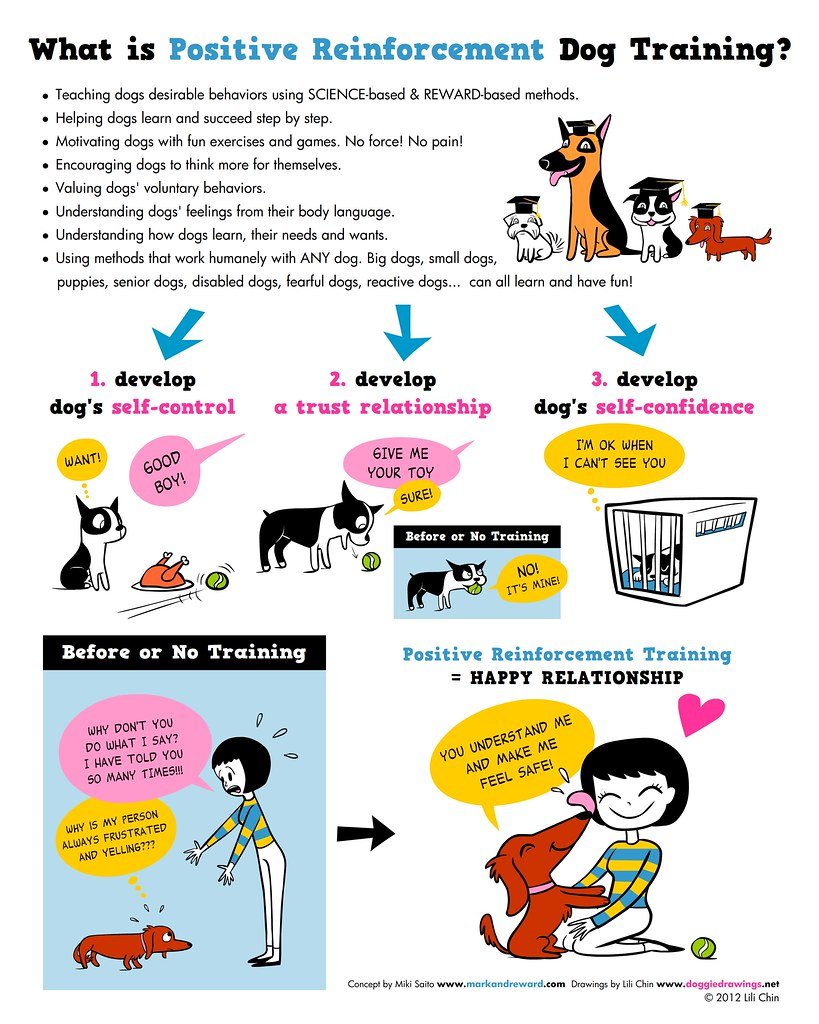Is your furry friend a mathematical marvel in disguise? Perhaps you’ve noticed their uncanny ability to gauge how many treats are left in the jar, or maybe they instinctively grow restless when it’s time to go for a walk, precisely on the stroke of the clock. If so, you’ll be delighted to know that teaching your dog to count is not just a far-fetched dream, but a charmingly achievable feat. In this article, we will unravel the fascinating world of canine mathematics and explore the methods you can employ to nurture your dog’s inner numbers whiz. Get ready to witness your faithful companion take their counting skills to remarkable new heights!
Table of Contents
- Teaching Your Dog the Basics of Counting
- Developing a Bond through Mathematical Exercises
- Using Positive Reinforcement to Nurture Counting Skills
- Gradually Introducing Advanced Mathematical Concepts
- Individualizing Training Methods to Enhance your Dog’s Counting Abilities
- Q&A
- To Wrap It Up

Teaching Your Dog the Basics of Counting
Dogs are incredibly intelligent animals and teaching them new skills can be a rewarding experience for both you and your furry friend. While counting may seem like a complex task, it is actually possible to teach your dog the basics of counting with some patience and consistent training.
To begin, start with the simplest numbers such as one and two. Use treats as a positive reinforcement tool and associate each number with a specific action or behavior. For example, when teaching your dog to recognize the number one, you can ask them to sit and visually show them one finger while saying “one.” Once they’ve successfully associated the action with the number, reward them with a treat and plenty of praise.
Gradually increase the complexity of the numbers and the associated actions, reinforcing the concept of counting. For instance, when introducing the number two, you can ask your dog to lie down and hold up two fingers while saying “two.” Repeat this process daily, focusing on one or two numbers at a time, until your dog demonstrates understanding and consistency in recognizing and responding to each number.
Remember that every dog learns at their own pace, so be patient and practice positive reinforcement consistently. With time and dedication, you’ll be amazed at how quickly your furry companion can grasp the basics of counting!

Developing a Bond through Mathematical Exercises
Developing a strong bond with mathematics may seem like an improbable notion, but engaging in mathematical exercises can truly foster a unique connection. These exercises offer more than just a way to improve skills or solve complex equations; they create an environment that encourages collaboration, critical thinking, and problem-solving abilities.
One way to facilitate this bond is through interactive group activities. Pairing students together to solve mathematical puzzles not only strengthens their knowledge but also builds camaraderie. By working together, students learn different strategies and approaches from one another, broadening their understanding of the subject. Additionally, group activities can be an excellent platform for peer learning and support, enhancing teamwork and sparking healthy competition.
Another way to foster the bond is through gamification. Transforming mathematical exercises into engaging games not only adds an element of fun but also fuels students’ intrinsic motivation. Incorporating rewards, challenges, and leaderboards can further incentivize them to explore mathematical concepts with enthusiasm. Moreover, introducing real-world scenarios and applying mathematical concepts to solve them can make the exercises even more relatable and exciting.
In conclusion, goes beyond plain academic pursuits. By promoting collaboration, gamification, and real-life applications, students can cultivate a connection with mathematics that extends beyond the classroom walls. Remember, this bond has the potential to empower students and ignite their curiosity, ultimately leading to a lifelong appreciation for the beauty and relevance of mathematics.
Using Positive Reinforcement to Nurture Counting Skills
Positive reinforcement is a powerful tool when it comes to nurturing counting skills in young children. By creating a positive and supportive learning environment, children are more likely to engage in counting activities and develop a strong foundation for numeracy skills. Here are some effective strategies using positive reinforcement:
- Games and Activities: Make counting fun by incorporating games and activities that involve numbers. For example, you can organize a scavenger hunt where children have to count objects or design a number-themed puzzle that rewards their efforts with small treats or stickers. This not only motivates them to count but also reinforces their achievement.
- Visual Aids: Utilize visual aids to enhance counting skills. Display number charts or colorful posters featuring numbers and encourage children to identify and count the objects depicted. By actively using visual aids, children develop a stronger connection with numbers, making the learning process more engaging and enjoyable.
- Encouragement and Rewards: Always provide sincere praise and encouragement for children’s counting efforts. Whether they are counting their toys, snacks, or even steps they take, acknowledge their progress and celebrate small milestones. Tangible rewards, such as stickers or a special mention, can further boost their confidence and motivation to learn counting skills.
Remember, positive reinforcement helps children associate counting with positive experiences, making it more likely for them to embrace and excel in numeracy skills. By creating a supportive and rewarding learning environment, children can develop a lifelong love for counting and mathematics.
Gradually Introducing Advanced Mathematical Concepts
Embarking on a journey to explore advanced mathematical concepts can be both exciting and intimidating. The key to success lies in the gradual introduction of these complex ideas, ensuring a solid foundation is built at every step. By taking a step-by-step approach, students can conquer even the most intricate mathematical concepts and excel in their understanding of the subject.
One effective way to introduce advanced mathematical concepts is through the use of real-life examples and practical applications. By connecting abstract ideas to tangible scenarios, students can grasp the relevance and importance of these concepts. This approach allows for a deeper understanding and paves the way for higher-level thinking.
Furthermore, breaking down complex concepts into smaller, manageable parts is vital. This can be achieved through the use of visual aids such as diagrams, charts, and graphs. These visual representations help to visualize abstract ideas, making them more accessible and easier to comprehend. It is also beneficial to incorporate interactive activities and group discussions to encourage active learning and reinforce understanding.
- Introduce real-life examples and practical applications
- Break down complex concepts into manageable parts
- Utilize visual aids to enhance understanding
- Incorporate interactive activities and group discussions
By using these strategies, students can embark on a journey of discovery and master the complexities of mathematics with confidence and enthusiasm.
Individualizing Training Methods to Enhance your Dog’s Counting Abilities
Teaching a dog to count may seem like something out of a movie, but with the right training methods, it is entirely possible to enhance your furry friend’s counting abilities. Dogs are incredibly intelligent creatures, and they can learn to associate numbers with tangible objects or actions. By individualizing their training methods, you can tailor the learning process to suit your dog’s unique abilities.
Here are some tips to help you enhance your dog’s counting abilities:
- Start with basic commands: Before diving into counting, ensure that your dog has a solid understanding of basic commands such as sit, stay, and come. This foundation will make the counting exercises much easier for your dog to grasp.
- Introduce visual aids: Use objects like toys or treats to represent numbers during training sessions. For example, place three treats in front of your dog and say “Three.” Gradually increase the number of objects as your dog becomes more proficient at counting.
- Use positive reinforcement: Reward your dog with praise, treats, or playtime whenever they successfully count a set of objects correctly. Positive reinforcement will motivate your dog to continue learning and improve their counting abilities.
- Practice regularly: Consistency is key when training your dog. Set aside dedicated training sessions each day to work on counting exercises. Short, frequent sessions are more effective than longer, infrequent ones.
Remember, every dog learns at their own pace, so be patient and adapt the training methods to suit their individual needs. With time, effort, and a tailored approach, your dog can impress everyone with their remarkable counting abilities!
Q&A
How can I teach my dog to count?
Teaching your dog to count can be a fun and interactive experience. Start by using treats to mark different numbers, and gradually introduce counting commands while rewarding your dog for correctly responding to them.
What are some basic counting commands I can use?
Simple commands like “count,” “show me,” or “how many” can be used to indicate to your dog that you would like them to respond with a specific number of barks, taps, or paw raises.
What techniques can I use to reinforce counting behavior?
Positive reinforcement is key to teaching your dog to count effectively. Reward your dog with treats, praise, or even a special toy every time they correctly respond to a counting command.
Can any dog learn to count?
While not all dogs may show the same aptitude for counting, most dogs are capable of learning basic counting commands with consistent training and positive reinforcement.
How long does it usually take to teach a dog to count?
The time it takes to teach a dog to count can vary depending on the dog’s intelligence and previous training experience. With dedicated daily training sessions, it is possible to see progress within a few weeks or even sooner.
Are there any specific breeds that are better at learning to count?
There is no evidence to suggest that certain breeds are inherently better at learning to count. Any breed or mixed-breed dog can learn to count if they receive proper training and consistent reinforcement.
Can counting skills be transferred to other areas of training?
Yes, counting skills can be a foundation for other training exercises. Once your dog has grasped the concept of counting, you can incorporate it into various activities, such as sorting toys or identifying objects based on numbers.
Are there any limitations to teaching a dog to count?
While dogs can learn to associate numbers with specific actions, it is important to remember that their counting abilities may not be on par with human capabilities. Dogs primarily rely on cues and signals rather than actual mathematical comprehension.
Is teaching a dog to count just a parlor trick?
Teaching a dog to count goes beyond being a mere parlor trick. It strengthens the bond between you and your dog, stimulates their mental abilities, and enhances their overall obedience and problem-solving skills. Plus, it can be an entertaining spectacle for family and friends!
To Wrap It Up
As we bring our fascinating journey to an end, we must acknowledge the incredible potential our furry companions possess. What began as a whimsical notion has evolved into an eye-opening exploration, showcasing the remarkable ability of our canine friends to understand the fundamental principles of mathematics.
In unraveling the secrets of teaching your dog to count, we delved into an extraordinary realm where numbers and calculations become intertwined with wagging tails and eager hearts. With patience, dedication, and a sprinkling of creativity, we have witnessed the miraculous transformation of curious canines into mathematical marvels.
While some may still remain skeptical of a dog’s numerical prowess, our venture into the land of teaching mathematics has made one thing abundantly clear: the human mind is not the sole custodian of this cognitive treasure trove. As we opened our hearts and minds, our four-legged companions graciously invited us to share in their remarkable cognitive abilities.
From introducing basic number skills to the thrilling world of arithmetic, we discovered that dogs possess an innate understanding of patterns, quantities, and even abstract concepts. Counting treats, identifying shapes, and comprehending simple equations became part of their repertoire as they expertly maneuvered their way through the mathematical labyrinth.
While the quest to teach your dog to count may seem an amusing diversion, it is more than just a parlor trick for entertainment. By imparting these mathematical skills, we are encouraging cognitive development, fostering creativity, and enhancing the bond between human and canine.
So, dear reader, as we wrap up this captivating exploration, let us not confine ourselves to the boundaries of conventional wisdom. Instead, let us continue to unleash the boundless potential of our marvelous companions by diving into the depths of mathematics, embracing the awe-inspiring world of numbers, and allowing our dogs to be the very best versions of themselves.
In this mathematical marvel of a journey, we have unraveled the unbreakable thread that intertwines the extraordinary minds of humans and the enchanting souls of dogs. Together, we have unveiled the beauty of mathematics and celebrated the brilliance of our furry companions. Now, it is your turn to embark on this wondrous adventure with your loyal friend, teaching them to count, and together, exploring the infinite possibilities that await.
As an affiliate, my content may feature links to products I personally use and recommend. By taking action, like subscribing or making a purchase, you’ll be supporting my work and fueling my taco cravings at the same time. Win-win, right?
Want to read more? Check out our Affiliate Disclosure page.